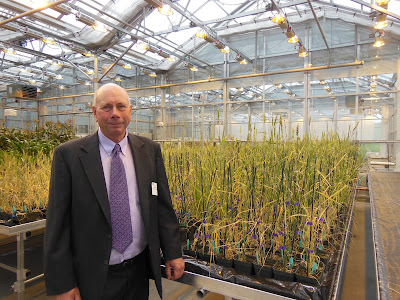If you're telling the story,
you have to tell the whole story.
It may sound like something Paul Harvey would say. But, instead, it's wisdom from my favorite farmer philosopher (aka, my husband).
Last spring, when a
"controlled" CRP burn ended up being
far from controlled, my first inclination was to keep it to myself. However, it's not like people in Stafford weren't going to find out about it. After all, we had volunteer fire crews from Sterling, Alden, Raymond and the Quivira National Wildlife Refuge arrive to help us. News like that gets around faster in a small community than ... well, faster than a controlled burn can become uncontrolled.
But, Randy wanted me to share the story on Kim's County Line. His theory:
If you're telling the story,
you have to tell the whole story.
This week, I had my own fire. My first inclination is to hide it. I hate
making mistakes. I probably hate
revealing my mistakes even more. (It's really silly, since most of my shortcomings are front and center anyway.)
This is about more than kitchen disasters. As a life-long perfectionist and overachiever, I like giving the impression that I have my life together, even if I sometimes feel like it's an illusion that rivals any of my husband's collection of magic tricks. I want to smother "bad news" as assuredly as that box of baking soda smothered the flames dancing in the bottom of my oven Monday night. But Randy's matter-of-fact admission of less-than-stellar outcomes kept burning in my mind as high as those orange-yellow flames. So, here it is ... the whole story.
I was co-hostess this week for PEO, which means I was responsible for providing the dessert. (If you know women's meetings, you know that's an important job.) I have a reputation for being a good cook. (My birth family knows
that my true misadventures in the kitchen date all the way back to Meatloaf
Mush when I was 13 or so, but that's a story for another time. Or ask my brother about it.)
Anyway, in order to uphold that reputation for baking delicious and beautiful treats, I was making cheesecake in springform pans instead of regular 13- by 9-inch pans. I had two springform pans filled with butter-laden graham cracker crusts and topped with cheesecake made from five whole packages of cream cheese, fresh lemon zest, sugar and other goodies.
Wanting to "look good" got me into trouble when the butter started dripping into the bottom of the oven. I added a layer of foil so that it wouldn't make such a mess. But, when the timer rang for the first check, I discovered flames. Yes, real flames, not just an acrid smell and burned-on residue. (Thank you, Lord, for that compulsion to check and double-check things and for the timing of that oven buzzer.)
I also discovered that I didn't have the fire extinguisher I thought I had above the stove. (If I used it for another cooking mishap, I have successfully developed amnesia about it.)
Thankfully, the half-full box of baking soda I had was enough to put out all but a little remnant of the flames.
I stay fairly level-headed in a crisis. I calmly pulled my cheesecakes from the oven. After the fire was out, I salvaged the ingredients. I ended up separating the cheesecake filling from the crust and baking the cheesecake in a sheetcake pan (along with a little extra that Randy got to taste test to make sure it didn't taste more like scorched earth than cheesecake.) To serve it Tuesday night, I fancied it up with fresh fruit and a dollop of whipped cream on top. It got rave reviews.
I could have not told anyone (and I didn't at PEO). And believe me, that's my first inclination. I want to believe I'm not telling the story
now because Randy already told the tale to our friend at the local cafe and to the lumberyard proprietor when he ordered fire extinguishers for the house.
I hope it's because I truly want to be real. This space shouldn't be just about posting fun trips to the
zoo with our granddaughter or
farming tales or
yummy treats accomplished
without an oven fire.
 |
| This is the same CRP field as at the top photo a couple of months after the fire. |
Making mistakes is not a crime. (Repeat that to myself 10 times.) Experiencing unexpected consequences is part of life. A lesson in humility helps refine me. If I hadn't wanted to impress with a lovely springform pan dessert, I wouldn't be stuck revealing my failure.
I should be just as quick to share the fire (or any other shortcoming) because it's how people can truly know me - not just the image of me I'd like to portray.
I need to be more like a
wildflower after a prairie fire. We all have "fires" in our lives. We
have times where the landscape feels as desolate as that blackened
earth or the scorch in the bottom of my oven. We are lonely. We face health problems. We're concerned about
our kids or our jobs or our community or a drought. The fires are different for all
of us. But we all have them. We can get hot under the collar. We can
feel like we're walking through flames.We can feel that all-consuming
heat and wind surround us in a way where it's even hard to breathe.
But if we don't admit it to anyone else, it just might consume us:
If you're telling the story,
you have to tell the whole story.






















































